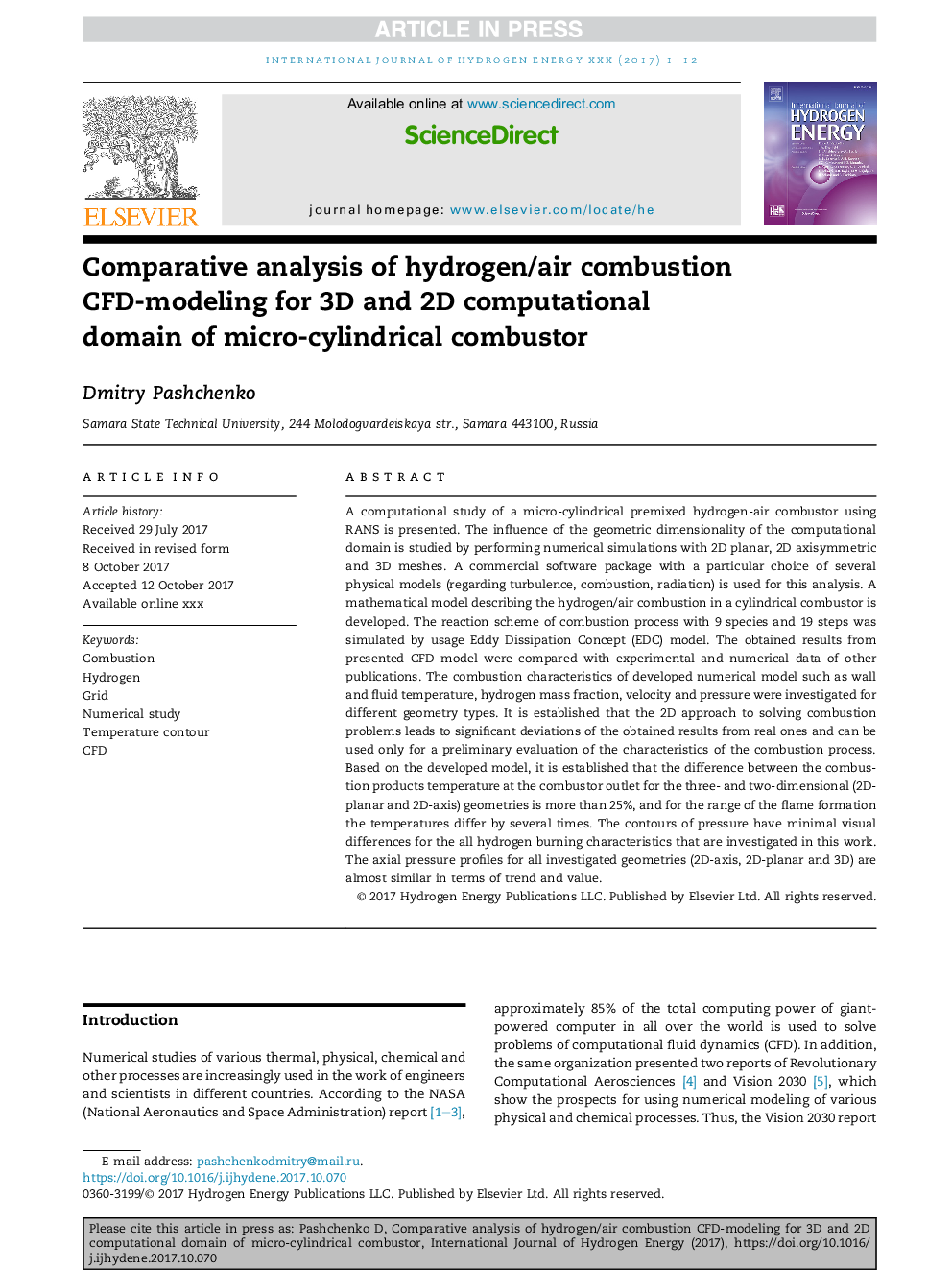| Article ID | Journal | Published Year | Pages | File Type |
|---|---|---|---|---|
| 7709280 | International Journal of Hydrogen Energy | 2017 | 12 Pages |
Abstract
A computational study of a micro-cylindrical premixed hydrogen-air combustor using RANS is presented. The influence of the geometric dimensionality of the computational domain is studied by performing numerical simulations with 2D planar, 2D axisymmetric and 3D meshes. A commercial software package with a particular choice of several physical models (regarding turbulence, combustion, radiation) is used for this analysis. A mathematical model describing the hydrogen/air combustion in a cylindrical combustor is developed. The reaction scheme of combustion process with 9 species and 19 steps was simulated by usage Eddy Dissipation Concept (EDC) model. The obtained results from presented CFD model were compared with experimental and numerical data of other publications. The combustion characteristics of developed numerical model such as wall and fluid temperature, hydrogen mass fraction, velocity and pressure were investigated for different geometry types. It is established that the 2D approach to solving combustion problems leads to significant deviations of the obtained results from real ones and can be used only for a preliminary evaluation of the characteristics of the combustion process. Based on the developed model, it is established that the difference between the combustion products temperature at the combustor outlet for the three- and two-dimensional (2D-planar and 2D-axis) geometries is more than 25%, and for the range of the flame formation the temperatures differ by several times. The contours of pressure have minimal visual differences for the all hydrogen burning characteristics that are investigated in this work. The axial pressure profiles for all investigated geometries (2D-axis, 2D-planar and 3D) are almost similar in terms of trend and value.
Related Topics
Physical Sciences and Engineering
Chemistry
Electrochemistry
Authors
Dmitry Pashchenko,
